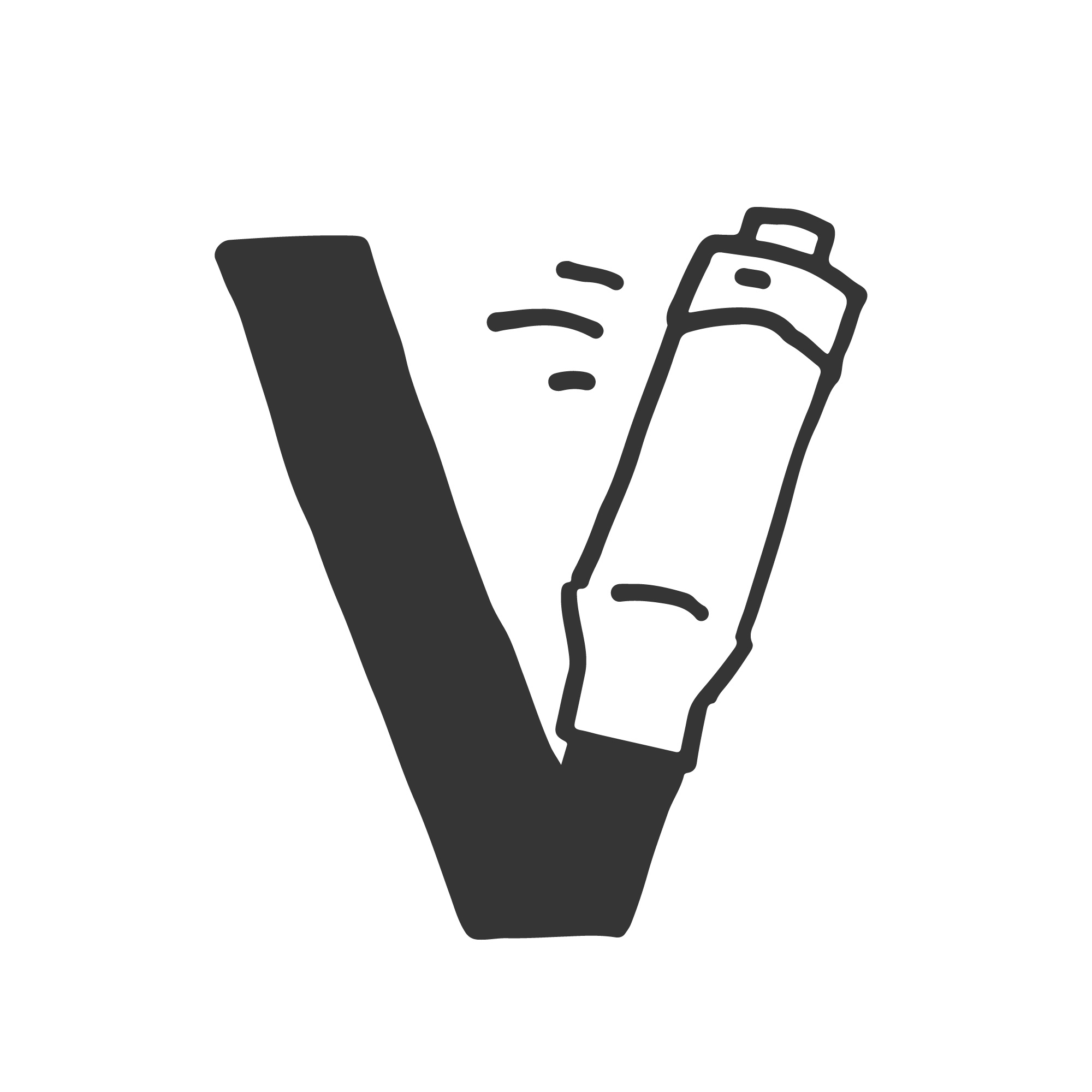When it comes to taking notes, a question that doesn’t get enough attention is this: how do you decide what to actually capture?
To help you answer that question, I encourage you to create a filter for yourself so that no matter what type of information source you’re taking notes on, you’ll be able to decide what goes on the page and what can fly on by.
Here’s how.
How to Filter for Important Ideas
Your primary task as a note-taker is to pay attention to the ideas that are coming your way, decide which are worth remembering, and then capture them succinctly on the page.
That’s true whether you’re reading a book, watching a video, attending a live event, listening to a podcast, or collaborating with others in a meeting.
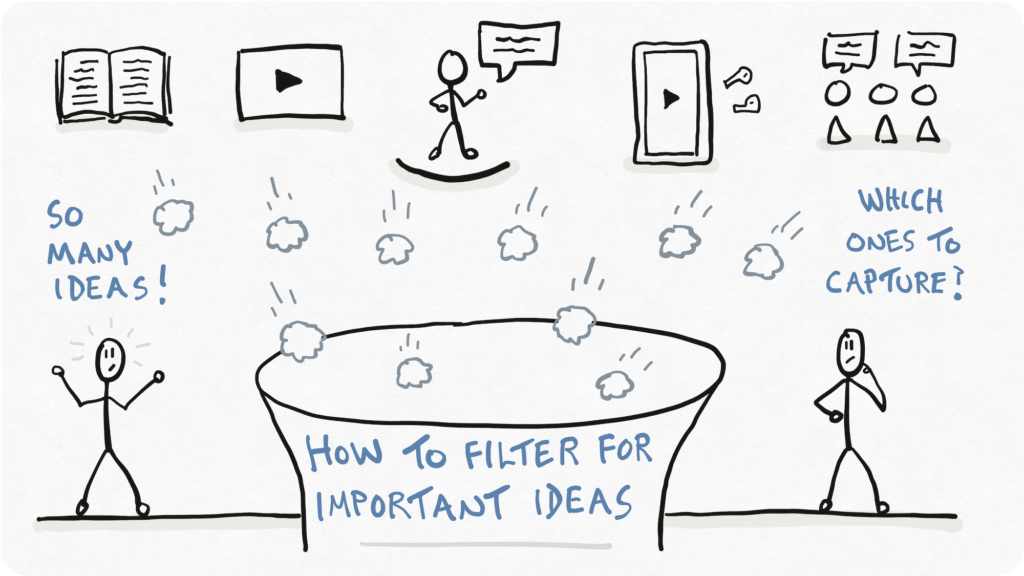
The way I see it, there are four end points of that funnel, four places where new ideas can go.
When the new ideas are clearly important, you can add them to your notes straightaway. Since what we focus on here is taking visual notes, that often means you’ll sketch out the idea rather than just writing it down, which makes it more sticky and easier to review.
There might be other ideas that aren’t necessarily important but are unique enough that they stick in your memory anyway.
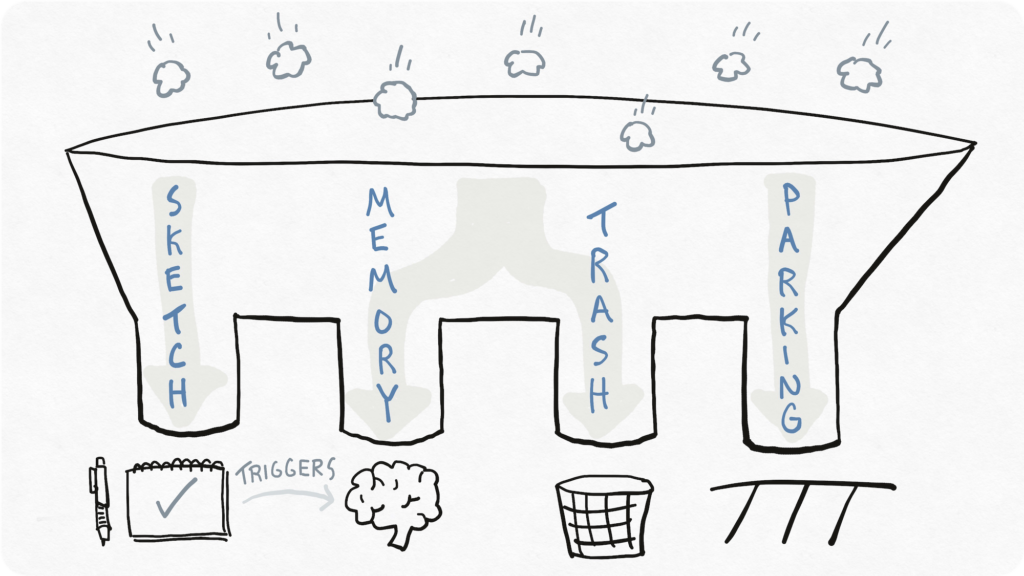
For those ideas that don’t strike a chord, they can fall by the wayside and be left in the trash, where you don’t have to worry about them.
There’s a fourth place they can land that you might not have considered before: a parking lot. Create a space for yourself to capture ideas that you’re not yet sure about, when you can’t tell whether they’re worth adding to your notes or not.
That parking lot could take the form of sticky notes or scratch paper off to the side of your primary note-taking materials.
Once you make it to the end of the chapter or podcast episode or meeting, you’ll have a better sense of whether or not those ideas in your parking lot are worth bringing into your notes.
But that still begs the question, how do you actually decide which ideas to capture and which not to?
How to Decide Which Ideas to Capture
Let’s now explore the different types of filters that you might want to keep in mind while you’re taking notes.
You could choose to focus simply on emotional resonance – only capture those ideas that strike a chord with you for one reason or another, the ones that make you feel something.
Or you could establish a guiding question that you’d like to have answered, and only capture ideas that are related to that question.
In a similar vein, you could zoom out a bit and identify your why – the reason you’re reading this book, listening to this podcast, or attending this meeting. Only those ideas relevant to that why get captured.
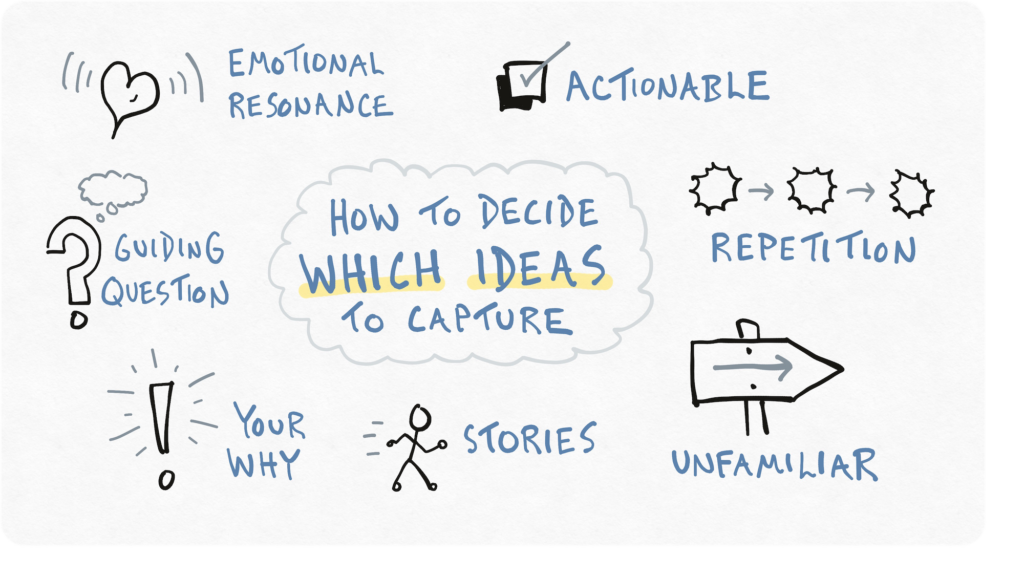
You might focus instead on ideas that are actionable, those that have a clear follow-up action that you’d like to remember after the note-taking session.
Or you could listen for those ideas that get repeated multiple times, since that’s likely an indication of their importance.
If the topic that you’re exploring is one that you’ve already got a good amount of experience in, you might choose to listen for the unfamiliar, and only capture what’s new to you rather than re-hashing the ideas that are already stored in your long-term memory.
Finally, you could choose to listen for stories, and let those be what make it onto the page as a connection point to the major concepts.
The Full Note-Taking Process
Implicit in the idea of establishing a filter and making use of a parking lot is the fact that there are things you can do before and after the note-taking process to help you get the most out of whatever it is that you’re experiencing.
Before the note-taking process you can pick the filters that make the most sense for the task at hand, organize your note-taking materials so that you’re not scrambling for them in the middle of the action, and set up a parking lot for those ideas that you’d like to reconsider later.
During the note-taking process there are things you can do to keep up with a fast pace of information flow: rely on bullet-point lists, use layers if you’re taking notes digitally to create more space for yourself, and even simply leave a blank space next to key words and phrases where you can add helpful sketches later on.
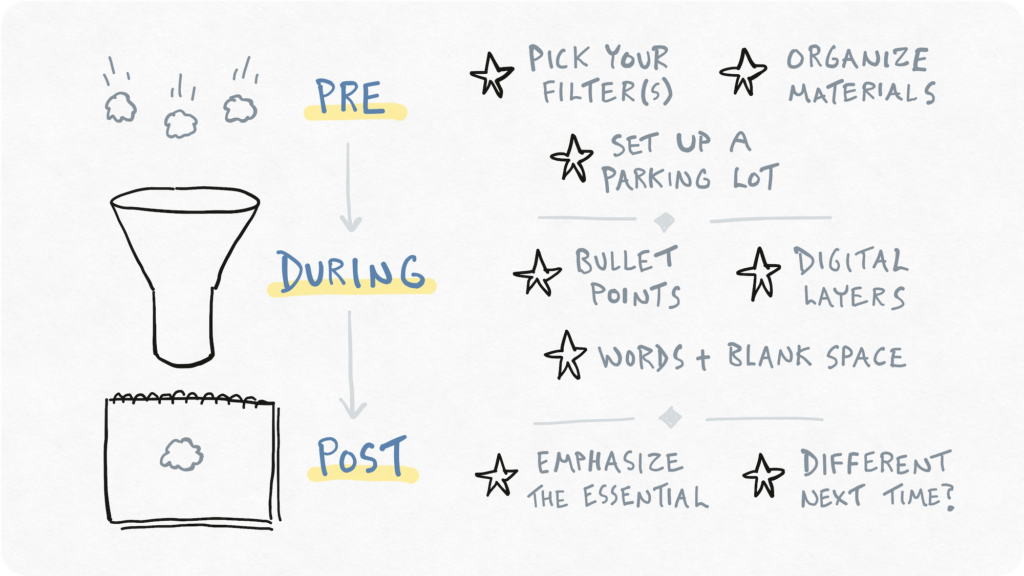
After the flow of new information has stopped, you can revisit your notes to emphasize the essential ideas with a highlighter or by bolding important words and phrases, decide which ideas in your parking lot are worth adding to your notes, and then take a moment to consider if you’d like to approach the next note-taking session any differently.
I hope that the process I share here and the filters I suggest help you get the most out of your next note-taking session!
If you’d like to dig deeper into the development of your sketchnoting skills, then come join us inside of Verbal to Visual.
There you’ll find complete-at-your-own-pace online courses, weekly live workshops, and a global community of visual thinkers working to master the skill of sketchnoting.
I look forward to sharing more ideas with you next time.
Till then,
-Doug
